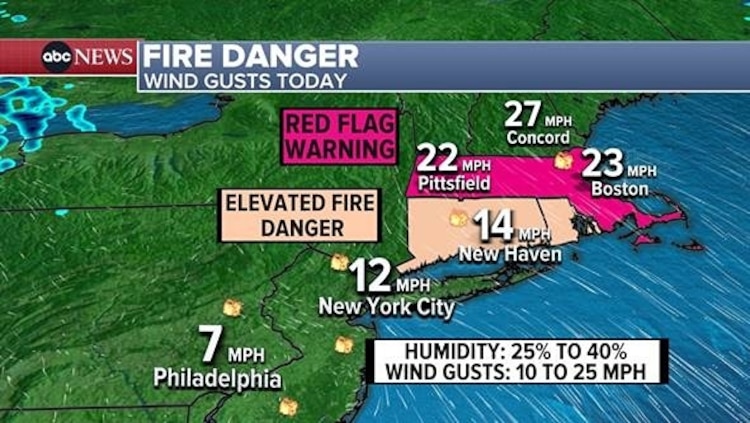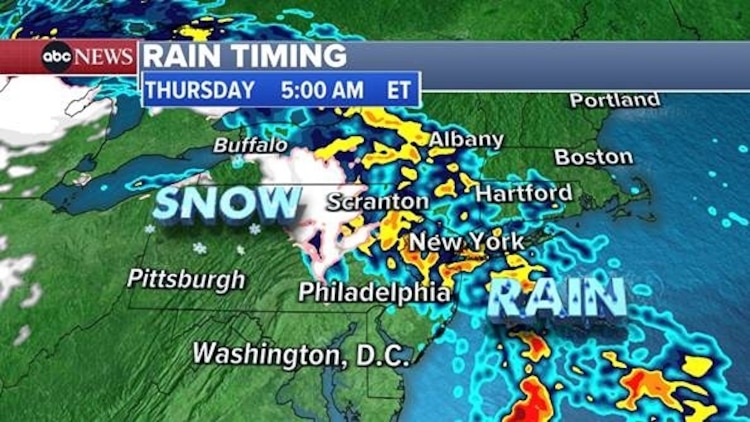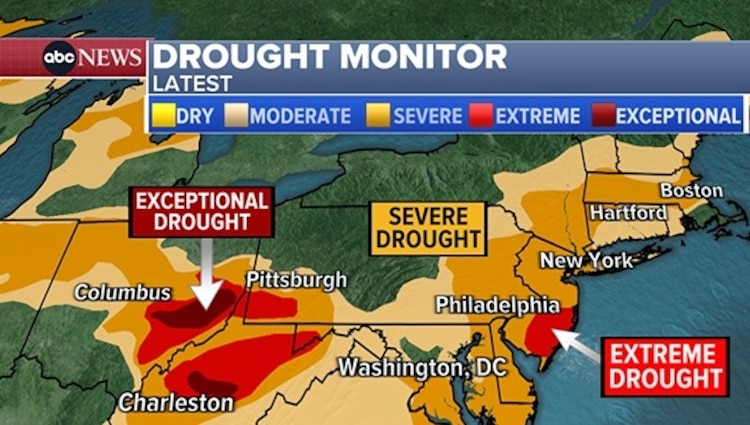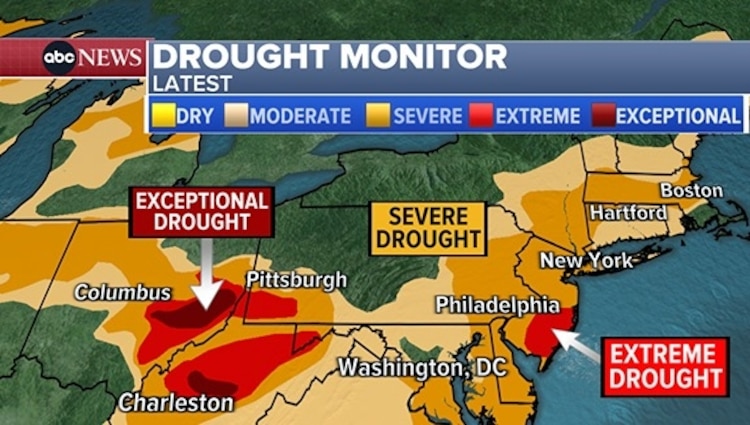Current Events
Author: anonymDate: 2024-11-20 17:18:38
The Commonwealth of Massachusetts is entirely under extreme fire risk alerts due to a persistent Northeast wildfire crisis.
An historic autumn drought has turned dry vegetation into a tinderbox.
The entire state of Massachusetts faced extreme fire risk alerts on Tuesday as new wildfires erupted across the Northeast amidst an unprecedented autumnal drought. With record low moisture levels across the Northeast, infernos started near a residential area in Philadelphia and within a state park south of Boston. A significant blaze that began on Monday was the Hainesport Fire east of Philadelphia. At one stage, twenty structures were imperiled, however, firefighters successfully halted the flames' advance towards houses, according to authorities. The fire was 50% contained on Tuesday after consuming 40 acres of forest, per the New Jersey Forest Fire Service.
In Massachusetts, firefighters continued battling a wildfire that started Monday in the Blue Hills Reservation, a state park near Milton. The fire was 10% contained Tuesday morning, according to the state Department of Conservation & Recreation. The origins of both the Philadelphia-area fire and the Massachusetts fire remain under investigation.
The most critical fire danger conditions are predicted to continue across New England on Tuesday, with the National Weather Service issuing extreme fire risk alerts covering the entire state. A heightened fire risk was also projected for parts of Connecticut and Rhode Island.

The fire threat is intensified by winds of 10 to 25 mph across the Northeast, rapidly spreading any ignited blazes. Much-needed rainfall is forecast to arrive in the Northeast from Wednesday night into Thursday morning, delivering 1 to 2 inches of rain to Washington D.C., Philadelphia, Boston, New York City, and upstate New York. Snow is also possible in parts of Pennsylvania and upstate New York.

The approaching precipitation will be a welcome development for the numerous firefighters still combating the Jennings Creek Fire burning along the border of New York's Orange County and New Jersey's Passaic County.

Joe Pollina, a meteorologist with the National Weather Service in Upton, New York, informed ABC News on Monday that 1 to 1 1/2 inches of rain is predicted for the Jennings Creek Fire zone. "It will certainly aid in fire suppression," Pollina stated regarding the forecast. Over the weekend, the fire, which has scorched about 5,000 acres, led to hundreds of voluntary evacuations when flames breached a containment line near Greenwood Lake and threatened homes in the Wah-ta-Wah Park private beach community, according to New York State Parks Department spokesperson Jeff Wernick. On Sunday, Orange County fire officials reported that structure protection efforts were successful and no buildings were harmed.

On Sunday, New York Gov. Kathy Hochul ordered that flags at state buildings be flown at half-mast to honor Vasquez. "Dariel was only 18 years old and had a truly bright future ahead that has now been unjustly taken away," Hochul said. "I commend his dedication to serving and protecting his fellow New Yorkers and his bravery on the front lines." The majority of the Northeast has experienced less than 25% of normal rainfall over the past month. Many areas are also encountering their driest autumn on record, including Philadelphia, which hasn't seen any measurable precipitation in 42 days. Northeast temperatures are also 5 to 10 degrees above average for this time of year. The increased warmth accelerates the drying of soils and other flammable materials such as leaves. Since Oct. 1, New Jersey firefighters have responded to at least 537 wildfires consuming 4,500 acres, according to the New Jersey Forest Fire Service, while officials at the New York State Department of Environmental Conservation reported New York fire crews have fought 60 wildfires since Oct. 1 burning 2,100 acres. At one point last week, the National Weather Service issued numerous red flag fire danger warnings across New Jersey and New York. At least 15 New York counties were under red flag warnings last week, including New York City and all of Long Island. Numerous wildfires erupted across the Northeast, including several in New York City, where one ignited in Inwood in upper Manhattan and another consumed wooded areas in Brooklyn's Prospect Park. Before receiving 0.18 inches of rain on Nov. 10 and 11, New York City endured one of its longest dry periods in history. New York City went 28 days without rain, the second-longest dry spell since 1924 when it went 36 consecutive days without rain. The surge of fires in New York City prompted the New York Fire Department to establish its first ever "brush fire task force" in the department's century-long history, according to FDNY Fire Commissioner Robert S. Tucker. In the initial fourteen days of November, the FDNY responded to 271 brush fires citywide -- the highest two-week total in New York City history, according to Tucker.